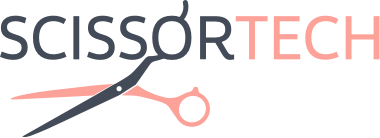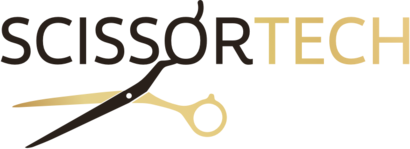Your Cart is Empty
Free Shipping and Lifetime Warranty
⭐️ USE CODE "SANTA20" 20% STORE WIDE ⭐️ Don’t miss Christmas 🎄 Order by Dec 18



If you've come to this page you have most likely been searching far and wide for information on professional hairdressing scissors. If you want to learn the ins and outs of using your hair cutting scissors you've come to the right place ! You may notice that your hairdresser prefers NOT to use kitchen scissors when giving a haircut! And here's why!

You have to learn to crawl before you can run right? So this being said, first, you have to learn to hold your hairdressing scissors before you can even begin to learn to cut hair. It sounds simple right? If you hold hairdressing scissors correctly it can ensure you give great haircuts while making sure you are comfortable as well.
In your search for hair cutting scissors you may have begun to notice the handle design looks different then your everyday scissors. You may also notice some have a slightly offset handle, or a drop handle or you may have even noticed some have a swivelling thumb. If used correctly these handles are designed to protect professional hairdressers hands and wrists. Hairdressers can be prone to things like carpal tunnel syndrome and repetitive strain injury which is why these handles are designed to keep pressure off our wrists.
Your hair cutting scissors, unlike any regular old pair of kitchen scissors, are designed to be held with your thumb and ring finger. The ring finger goes on top and most scissors will have a finger rest next to the finger holes to rest your pinky finger on. Your index finger and middle finger will rest ever so slightly next to each other on the scissor handle. Using your ring finger and thumb keeps your hand in a more comfortable position.
It's also important to make sure your scissors fit your fingers correctly. When you receive your scissors from Scissor Tech you will see a few rubber finger inserts included in your scissor case. These are to make sure your finger holes are the right size. The finger hole for your ring finger should sit between your first and second knuckle. Your thumb hole should be sitting up to or on the nail cuticle. It's important to make sure that your thumb has a little room to move around.
When cutting hair we use a technique called palming your shears or scissors. This is the way you can hold both your scissors and comb in one hand. When combing and sectioning hair remove your thumb from the finger hole and bring your scissors into your palm. You can then hold your comb. When using your hairdressing scissors to cut hair, you transfer for comb to your other, non- cutting hand.

To cut a baseline, or a blunt cut you will first need to section the hair. The most basic sectioning is 4 sections. Part the hair from the to the back and then from crown to behind the ear on both sides of the head. From here start at the back two sections and take smaller sections to cut. To get a perfectly blunt line, comb the hair straight down. If you lift the hair this will give it some graduation which will not give you the super straight blunt line. You can use your fingers to create a straight line or follow the line of your comb. Continue to take smaller sections of each larger section and comb the hair down with zero elevation.
There's different professional hairdresser techniques you can use to create movement and texture in your haircuts.
The most commonly used texturising technique is point cutting. Point cutting is almost exactly how it sounds- you're cutting points into the hair. This technique can be done on wet or dry hair. If using it to soften lines or break up hard lines it can be done on wet hair to remove length as well. If you just want to remove the weight or soften lines it is best done on dry hair. To remove weight you can cut deeper into the hair, in the interior of the cut to avoid removing length.
Slide cutting hair is another popular technique. It's used for removing weight, blending layers, creating face framing angles and has also become very popular for cutting extensions. This technique is best done on dry hair and requires a super sharp scissor blade. If your scissors are not up for the job you can cause more harm than good. To slide cut you are sliding the scissors along the hair shaft to push it to a sharp point. If your blades are dull or have the wrong edge you can pull the hair or worse cause split ends. This is definitely for the more experienced hairdresser.

Hair thinning shears and texturising shears are a must have for a hairdresser. Thinning shears have one regular blade and one blade of teeth. They usually have between 25 and 40 teeth. This is to remove weight and not length. These can be your best friend when thinning out thick hair. Sometimes known as finishing shears, they can also be used to soften hard lines and blend your haircuts. It is always best to use your thinning shears on dry hair!
Texturizing shears are similar to thinning shears but with less teeth. They have between 7-20 teeth. These teeth remove more weight and add a very chunky texture. Not for the faint of heart these shears need to be used sparingly as not to leave holes. They're great for thicker hair and creating a lot of texture.

Now that we have broken down the basics of hairdressing scissors its time for you to pick out your next pair of scissors! Message our very friendly and helpful customer service and you are sure to find the best pair of scissors for you!
